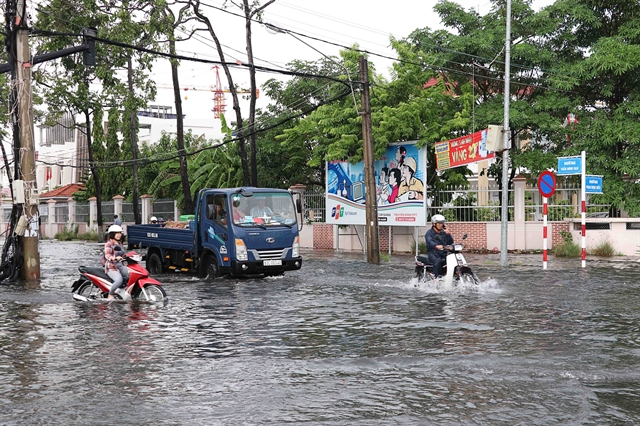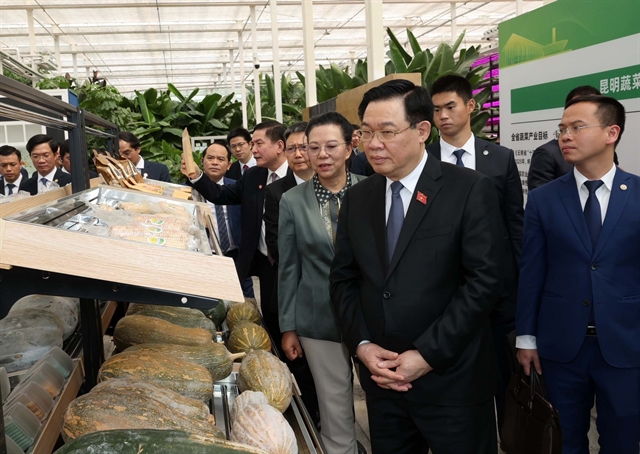 Environment
Environment


|
| Land subsidence in HCM City and the Cửu Long (Mekong) Delta has ranged from 0.1 to 81 centimetres in the last 10 years. It causes flood in the regional provinces. VNA/VNS Photo by Kim Xá |
CẦN THƠ — Land subsidence in HCM City and the Cửu Long (Mekong) Delta has ranged from 0.1 to 81 centimetres in the last 10 years, according to the Water Resources Management Department at the Ministry of Natural Resources and Environment.
The figure was reported at a conference on land subsidence in Mekong Delta, co-organised by the Ministry of Construction and the German Corporation for International Cooperation (GIZ) in Cần Thơ City on Friday.
Nguyễn Minh Khuyến, deputy director of the Water Resources Management Department, said the department had set up 339 monitoring points for recording land subsidence in HCM City and the Mekong Delta in the last 10 years. Of these, 306 points saw land subsidence.
An Lạc Ward of Bình Tân District in HCM City saw land subsidence of up to 81cm, Bạc Liêu Province 62.6cm, Sóc Trăng 53.1cm, and Cần Thơ 52.4cm.
Experts at the conference said that overexploitation of underground water, rising sea levels, and substandard drainage systems were the main causes of land subsidence.
Data from the department showed that about 1 million cubic metres of underground water are exploited every day in the region.
Dr Philip Minderhoud of Utrecht University in the Netherlands said that land subsidence would improve if local authorities dealt with the overexploitation of underground water. He said that underground water in the Netherlands was used only for emergency situations like serious drought caused by climate change, not for daily use.
Sepehr Eslami Arab of Utrecht University said that land subsidence also caused serious flooding and tides in the rainy season, as well as salinity in the dry season.
In an attempt to curb water overexploitation, the Ministry of Natural Resources and Environment has submitted to the Prime Minister a draft decree to tighten control over construction activities.
The ministry will restrict new construction that would exploit underground water, and review and make adjustments for current works.
The ministry will also build new water systems to provide clean water to rural areas.
The Mekong Delta is home to nearly 18 million people, and is the most important rice and fishing region in the country. HCM City is the largest city in Việt Nam, with a population of more than 8 million. — VNS









